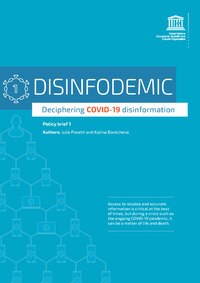
Photo from wikipedia
Introduction The COVID-19 pandemic contributed to the spread of abundant misinformation by the media, which caused fear and concern. Objective To determine the association between the pathologies of the mental… Click to show full abstract
Introduction The COVID-19 pandemic contributed to the spread of abundant misinformation by the media, which caused fear and concern. Objective To determine the association between the pathologies of the mental sphere and the perceptions of fear and exaggeration transmitted by the media with respect to COVID-19 in Latin America. Methodology The present study has an analytical cross-sectional design that is based on a validated survey to measure fear and exaggeration transmitted by the media and other sources (Cronbach's α: 0.90). We surveyed more than 6,000 people, originally from 12 Latin American countries, who associated this perceived exaggeration with stress, depression, and anxiety (measured through DASS-21, Cronbach's α: 0.96). Results Social networks (40%) or television (34%) were perceived as the sources that exaggerate the magnitude of the events. In addition, television (35%) and social networks (28%) were perceived as the sources that generate much fear. On the contrary, physicians and health personnel are the sources that exaggerated less (10%) or provoked less fear (14%). Through a multivariate model, we found a higher level of global perception that was associated with whether the participant was older (p = 0.002), had severe or more serious anxiety (p = 0.033), or had stress (p = 0,037). However, in comparison with Peru (the most affected country), there was a lower level of perception in Chile (p < 0.001), Paraguay (p = 0.001), Mexico (p < 0.001), Ecuador (p = 0.001), and Costa Rica (p = 0.042). All of them were adjusted for gender and for those having severe or major depression. Conclusion There exists an association between some mental pathologies and the perception that the media does not provide moderate information.
Journal Title: Frontiers in Psychology
Year Published: 2023
Link to full text (if available)
Share on Social Media: Sign Up to like & get
recommendations!